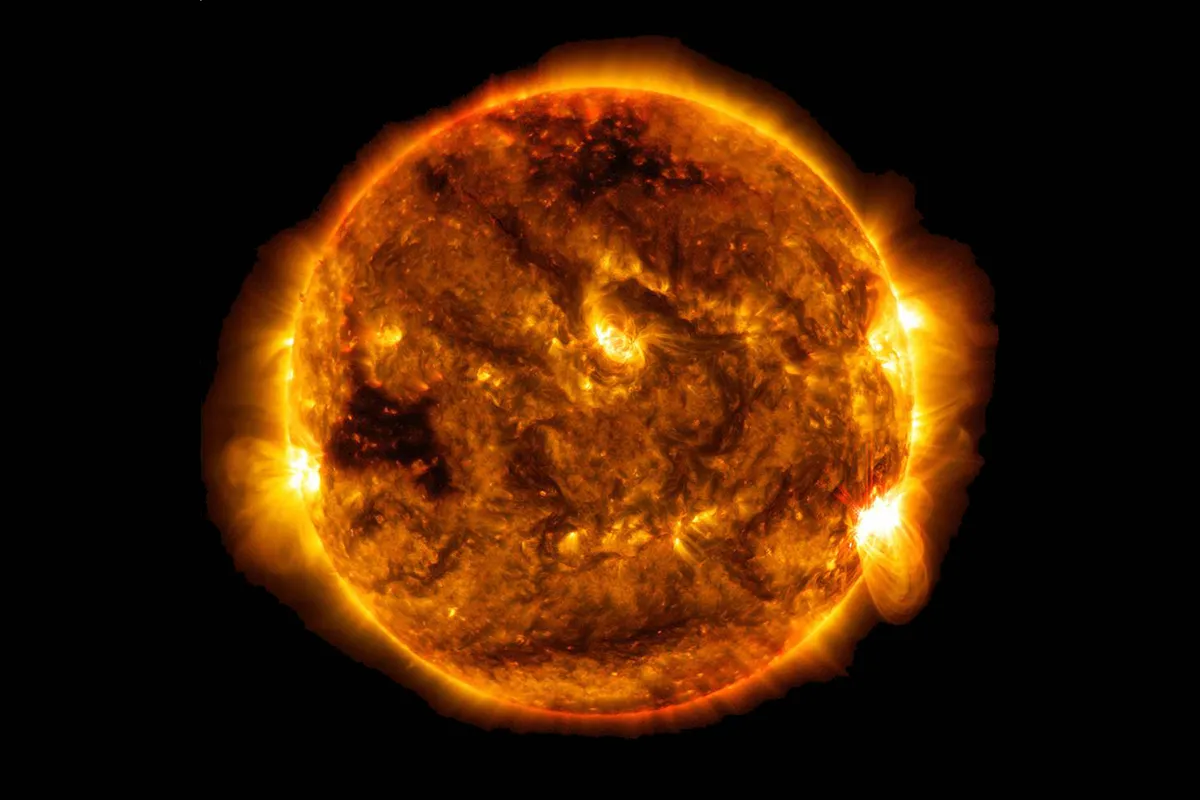Though our Sun is an average-sized star, it is the largest object in our Solar System.
The Sun accounts for 99.8% of our Solar System's mass, so the mass of all the planets combined makes up just 0.2% of the Sun's mass.
The answer to the question how many Earths can fit in the Sun depends on how you measure, for example, by mass, volume, or diameter.

The Sun's mass is 1,988,500x10^24 kg, and Earth's is 5.9724 x10^24 kg, so one Sun equals about 333,000 Earth masses.
By volume, the Sun is 1,412,000 x10^12 km^3, and Earth is 1.083 x10^12 km^3, so it would take 1.3 million Earths to fill the Sun (assuming the Earth spheres are squishy and pack in with no gaps!)
The Sun's diameter is 1,392,000 km (864,000 miles), and Earth's is 12,742 km (7,917 miles), so Earth could line up 109 times across the face of the Sun.
The surface area of the Sun is 12,000 times that of the Earth's
What about the biggest and smallest planets in our Solar System? How many of them could fit in the Sun?
Jupiter, the largest planet, has a mass of 1,900x10^24 kg, 318 times that of the Earth, and would fit 1,000 times into the Sun.
Mercury is the smallest of our planets, with a mass of just 0.330x10^24 kg, so you would need 21.2 million Mercurys to fill the Sun.
Dwarf planet Pluto has just 1% of the mass of Earth, so more than 200 million Plutos are equal to the Sun's mass.
Our Moon is 400 times smaller than the Sun and 27 million times less massive. You would need 64.3 million Moons to equal the Sun.

